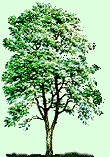Redbourne JavaScript Questionnaire Objects
SubjectThis tutorial discusses the use of the Redbourne questionnaire classes (qaBuilder, qaRunner, qaDumper), how to use the classes to manipulate questionnaire data, present questionnaire, and retrieve the results. The following topics are covered:
OverviewThe Whitebeam System has been extended through three libraries (qaBuilder.js, qaRunner.js and qaDumper.js) to provide special JavaScript classes called qaBuilder, qaRunner and qaDumper respectively. The underlying storage mechanisms rely on File and Binary data, but this fact is almost completely hidden by the three classes. For portability, both questions and answers are stored in XML form. Questionnaire contain a number of pages, which are presented to the user one at a time. Each page can contain one or more questions, and questions consist of HTML form components with their layout specified by a qaRunner style-sheet. The three objects are all created by using the new JavaScript operation. This returns an instance of the requested class. qaBuilder Object class defines methods that are used to easily create or modify a questionare. qaRunner Object class defines methods that are used to easily display questionare pages, and to store the submited results. qaDumper Object class defines methods that are used to output, in "pretty-printed" XML or CSV format, questionnaire and their answers. DependenciesThese features are available by including the correct one of the three .js files: qaBuilder.js, qaRunner,js and qaDumper.js.Detailed UsageBuilding a Questionnaire.This is most easily done using a "createWizard" - An example of this can be found as part of the membership services application example Alternatively, questionnaire can be built using the individual methods provided as part of the qaBuilder class. The sequence of events is generally:
Each time the questionnaire is changed, an internal version number counter is incremented. The intention being that a questionnaire can be copied and modified, and answers to these questionnaire can be correctly attributed to the appropriate version of the questionnaire. The questionnaire's name provided to the initialise call is also used to identify a questionnaire. Be careful therefore to use different names for different questionnaire. Executing (completing) a QuestionnaireA simple example of how to repeatedly execute a questionnaire and collect the answers is provided as as part of the membership services application example Alternatively, answers can be collected using the individual methods provided as part of the qaRunner class. The sequence of events is generally:
If the questionnaire is not marked as complete, all of the submission buttons will be marked "Disabled" and cannot be pressed. This is intended an a debug and display facility. Displaying a questionnaire and its resultsThe qaDumper object is designed to output Questionnaire and thier answers in a human useable form. This mostly involves the addition of whitespace to the existing internal format to make it readable. See the object documentation, or the survey-runner example from the previous paragraph for examples of its use. Advanced questioninaire featuresThe above text describes basic questionnaire building, running and displaying. Several adavnced features are available, which can be deduced by reading the object-level documentation. Conditional questions and pagesDisplaying questions (or not) based on answers to previous questions is
the most notable advanced feature, and is achieved using the
WARNING: The above feature dynamically renumbers the questionnaire's pages. No attempt is made to remove pages or questions until at least one page of answers has been provided. This can cause a deadlock if the answers to page one can cause the whole of the rest of the questionnaire to be disabled. If this is possible, the JavaScript page should be used to catch this exception by checking the number of pages available to display after each page is submitted. Mandatory questionsA facility exists to specify that answers to questions are mandatory. See
documentation of the Using this feature requires that the Presentation Page running the questionnaire
is written with this feature in mind. It must check the return value
of each |

